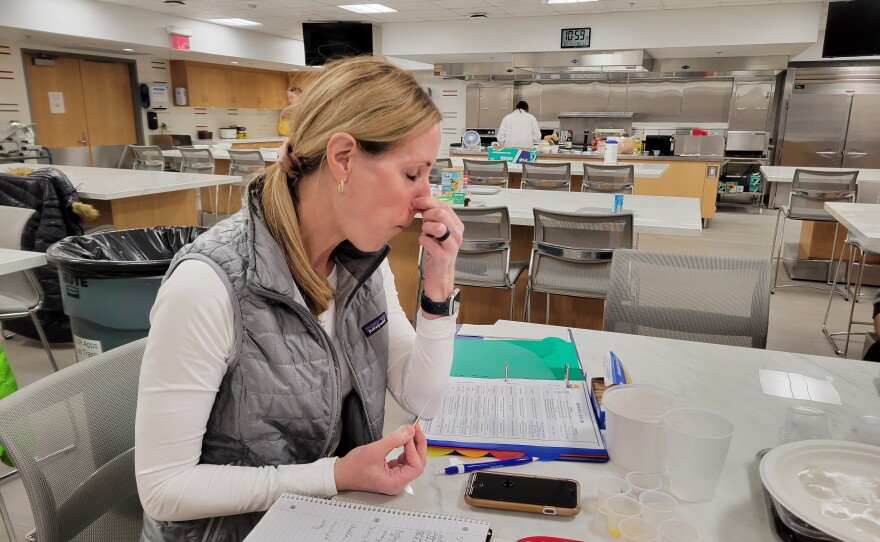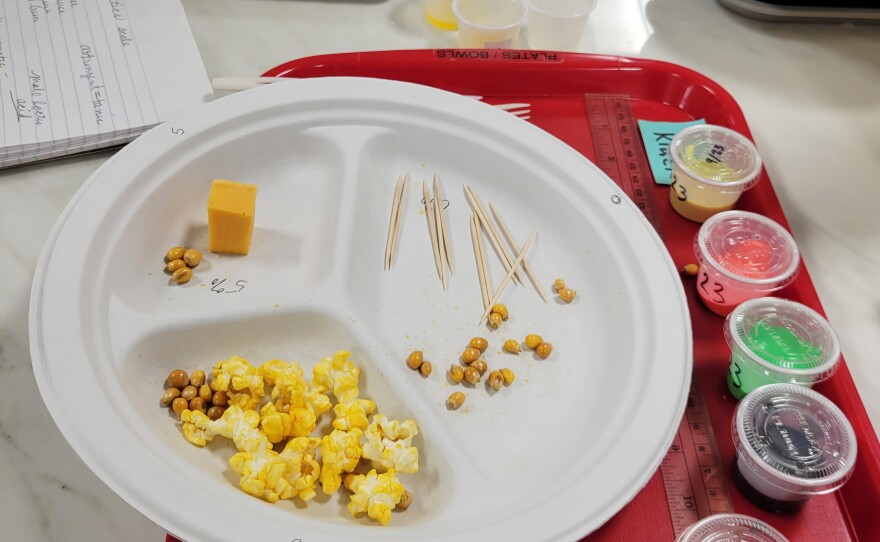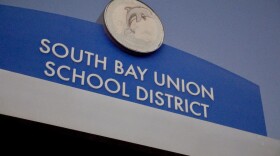When the University of Wisconsin's Center for Dairy Research publicized it was looking for a new crew of cheese tasters, the response was exuberant, as you might expect in a state known as the country's cheese capital.
250 people applied for five part-time jobs available. The Center rigorously trains them to analyze cheese made and provided by graduate student researchers, pizza makers and the state's esteemed cheese industry.
"The more like an instrument they are, the better they are," says Brandon Prochaska. He's the sensory coordinator at the dairy research center. Ultimately, researchers and cheese companies want good data about how their cheese is tasting, stretching, or baking, but are mindful that it's real people, not machines, who are doing the eating.
The University of Wisconsin has been hiring cheese tasters for about a decade. In the past, they were all students, but a year ago the university opened the job to community applicants and this year, the job posting for a "Descriptive Sensory Panelist" went viral. The call-out was covered on CNN, NBC's The Today Show and Business Insider.
Prochaska doesn't know what the secret sauce was that made the need for cheese tasters suddenly hot stuff, but he admits cheese has a comforting presence, as does the thought of being paid to taste cheese all day.
"You know, there's a lot of different jokes made about it, good or bad," he says. "But there were definitely some people very passionate, enthusiastic about, 'look at all the pizzas I've eaten, here's all my Domino's receipts or whatever, and you should hire me.' And so yeah, there's just something about it that struck a chord with people."
How cheeseheads get their dream job
For the cheese-tasting applicants, it helped to have worked on a sensory panel before or to have a natural ability at discerning different tastes. "With this round, with as many applicants as we had, we actually put them through kind of a series of tests," says Prochaska. "Can you detect the difference between acid and bitter? Can you tell me which of these cheeses is salty? Or can you pick the older sample between the fresh and the old?"
Kelly Kluck, one of the new tasters, had already earned a few wine tasting certifications. "The thing that's great about this, I feel like I've taken a hobby, and I'm actually getting paid ($15 an hour) to do it now," she says. "So that makes me so happy."

The new hires joined a rotating crew of about 20-25 people who make up panels of tasters that meet every week, even holidays. "Because a lot of what we do is for published research, we want to make sure it is good solid science, repeatable data and a good amount of data points so that we can feel confident in the results," notes Prochaska.
The science of cheese tasting
At a recent training, Prochaska taught the new taste testers the cheese lingo. There's a lexicon of official terms, from milky and buttery to sheepy and goaty. There's even an "animal/wet dog" category, "aromas and flavors associated with gelatin or wet dog."
Panelists follow a procedure for everything, when to chew, when to hold shut and open their noses to block or pick up aromas from the cheese, when to spit out the cheese. So, just like a person tasting wine doesn't work to get drunk, the panelist eating cheese doesn't want to get too full.
They serve an important purpose, says Prochaska. He says they're answering questions like, "how do we extend the shelf life of a product? How do we make something have an even better flavor? Or maybe there's a new technology coming out that's not quite, you know, replicating the flavor people expect. And we're thinking about, well, how can we take that and make it closer to what it is?"

When Prochaska sends chunks of full-fat mozzarella around the training table, he says it has a "vinegar-y, citrus-y kind of note." Then Kluck chimes in, calling it "lemongrass-y." Prochaska asks for a clarification, "lemongrass?" or "lemon [and] grass?" Kluck answers "lemongrass."
Some like it hot: pizza and curds
The tasters analyze "pizza" too, though it's not really like your favorite delivery pie. There's a uniform crust, cheese, but no toppings--no pepperoni, sausage or onions, and just two tablespoons of sauce.
A crew of about 7 to 8 tasters starts a methodical process, as a continuous stream of pizzas come out of the oven. "So, we're watching the thermometer the whole time," says Prochaska. The team looks first at the visual aspects of the pizza, gauging the browning or blistering of the cheese. Then one of them uses a fork to see how far the cheese will stretch upwards, while another uses a ruler to measure it.
"When it hits 195 [degrees], that's when we do the stretching. [At] 165 we cut the pizza. And then 145 is when we taste. So that's kind of standard just all the way throughout. Some of it is convention and some of it is like, we don't want to taste if it's going to burn our mouths."
At the magic temperature, the panelists peel off the crusts, pop cubes of melted cheese into their mouths, and furiously enter data into their iPads.
It's not exactly what Carolyn Haswell expected. "I actually signed up because I love pizza. I love making pizza. I know all the types of pizza around the country. And then I come here and it's like, 'it's experimental cheese, enjoy,'" she laughs.
Another panelist Denise Dipert says she doesn't really think of it as pizza. "I think of it as a piece of mozzarella with some nasty sauce on it. So, it doesn't correlate at all."
But Dipert is happy to help the student researchers, one of whom, she says, has a project about cheese curds. "So, we get to evaluate squeakiness. And, [the students are] all young and they're looking for their futures. And it's fun," she says.
Prochaska explains the panel is developing an entirely new scale on how to measure cheese curd squeakiness.
"Is it the volume? Is it the number of squeaks?" he asks. "Everything comes down to definition and protocol. Are we gonna do 10 chews? Are we gonna do 15 chews? Are we going to do it warm? Are we going to do it cold?" He says everything has to be standardized so it can be repeatable.
It's a mix between the Wisconsin State Fair and a science lab, and while it might be a little more to bite off than some cheese tasters expected, it's just what others wanted. "I fondly recall being a graduate student myself," says panelist Carrie Cook. "So, I like helping them with their research. I am now looking for a real science job. So, this sort of substitutes, and is very flexible."
The scientific deliberation on cheese has also not dissuaded Wisconsinite Jim DiUlio. He's retired from finance and loves to cook. He's also a pizza fan, a mac and cheese fan and even eats a cheese sandwich for breakfast once in a while.
Being part of a group that has to determine the attributes of Wisconsin's most celebrated product isn't a chore for him. "No, not at all," he says, "I like cheese."
Copyright 2023 WUWM 89.7 FM - Milwaukee's NPR. To see more, visit WUWM 89.7 FM - Milwaukee's NPR. 9(MDAzMjM2NDYzMDEyMzc1Njk5NjAxNzY3OQ001))






